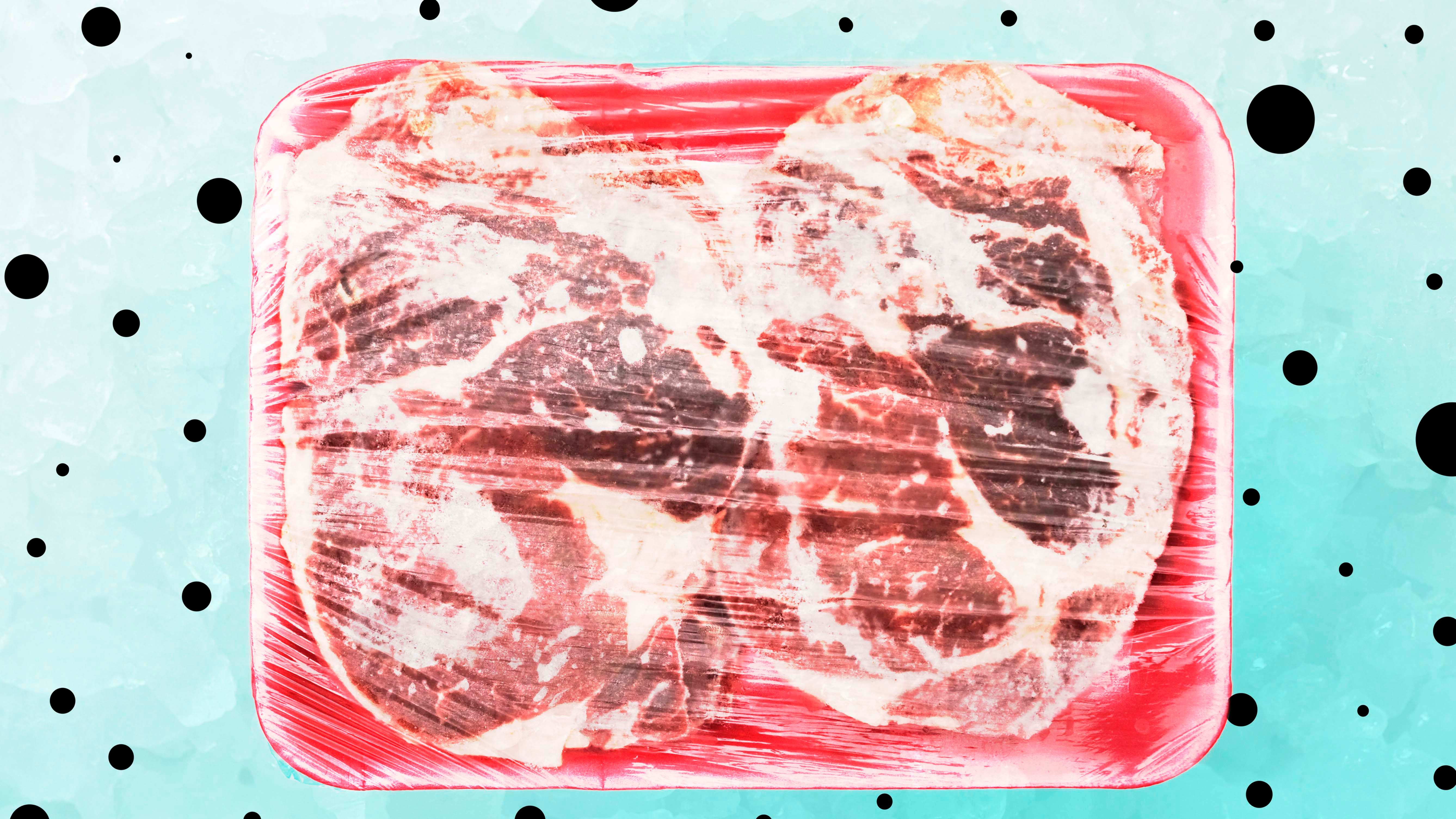Is It Safe To Eat Food That's Been Freezer Burnt?
Right now, in the back of your freezer, there's a bag of peas you opened two years ago or a couple chicken breasts hastily wrapped the last time there was a sale. Fuzzy with frost, stuck together, and zapped of flavor, those passed-over packages are dying the same slow freezer burn death of countless forgotten foods everywhere.
The scourge of freezer burn is caused by two effects: dehydration and oxidation. The former—moisture loss—dries out your frozen foods, leaching them of flavor and turning the texture leathery and hard. The latter—a chemical reaction in which oxygen molecules bind with other molecules to form new compounds—causes irreversible color and flavor changes. Let's look at both in turn.
Dehydration in the freezer is caused primarily by sublimation, the process whereby a solid evaporates directly into a gas. To see how this works, consider the ice crystals that lie on the surface of a frozen steak. Looking toward the steak, those water molecules see a moisture-rich environment where they can bind with other water molecules to form a solid. Looking toward the frigid air, however, those same molecules see a moisture-poor environment where there's nothing to grab onto. Though the water wants to stay attached to the steak, occasionally a molecule wiggles free, and zooms off never to return. As these molecules depart, the surface becomes rougher and rougher, exposing more surface area to the air and accelerating the loss. Given enough time, even water trapped deep within the steak will find a pathway out—carrying flavor with it.
Oxidation, on the other hand, is sort of like this process in reverse. The freezer air is full of oxygen molecules zipping about, while the surface of the steak is bereft, and so as oxygens collide with food, they can be captured. The lovely red color of steak, for example, turns brown as myoglobin becomes its oxidized cousin metamyoglobin, and the rich flavors of fat oxidize and morph into "flat" or off-tasting versions of their former selves.
Freezer-burned foods are safe to eat, but they've lost their zing and there isn't much to do to repair them. You can trim off affected areas and rinse crusty ice-shards away, but fundamentally the chemical changes of dehydration and oxidation are irreversible. Instead, how do you avoid freezer burn from the start?
The most important factor is to make sure foods are properly packaged. Never leave surfaces exposed, and minimize contact between your food and the air. For meat, wrap tightly once in plastic wrap or waxy freezer paper, then again in aluminum foil. (Plastic wrap itself isn't airtight, and neither are most of the plastic shrinks used to wrap meats in grocery store display cases.) Liquids should be in plastic jars with tight-fitting lids, and vegetables can go in sealable freezer bags. Whenever possible, remove as much air as possible—squeeze the bag out, wrap tightly, avoid extra headspace in jars—or use a vacuum sealer to do the job for you.
Perhaps the best advice of all, though, is just to eat your food before the freezer claims it. The best wrap-jobs, and highest-end vacuum sealers can only put off the inevitable—all your frozen food will one day succumb to the burn.
